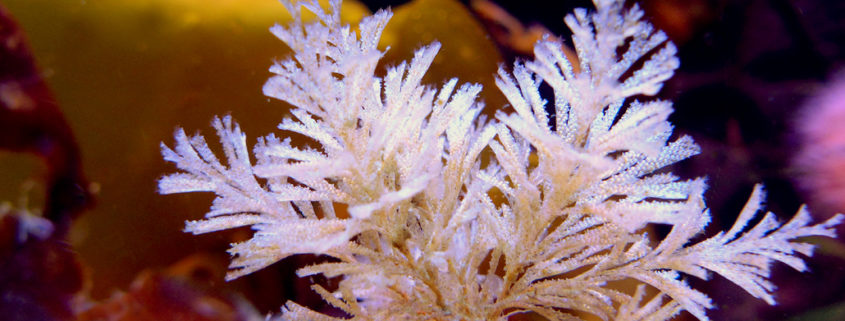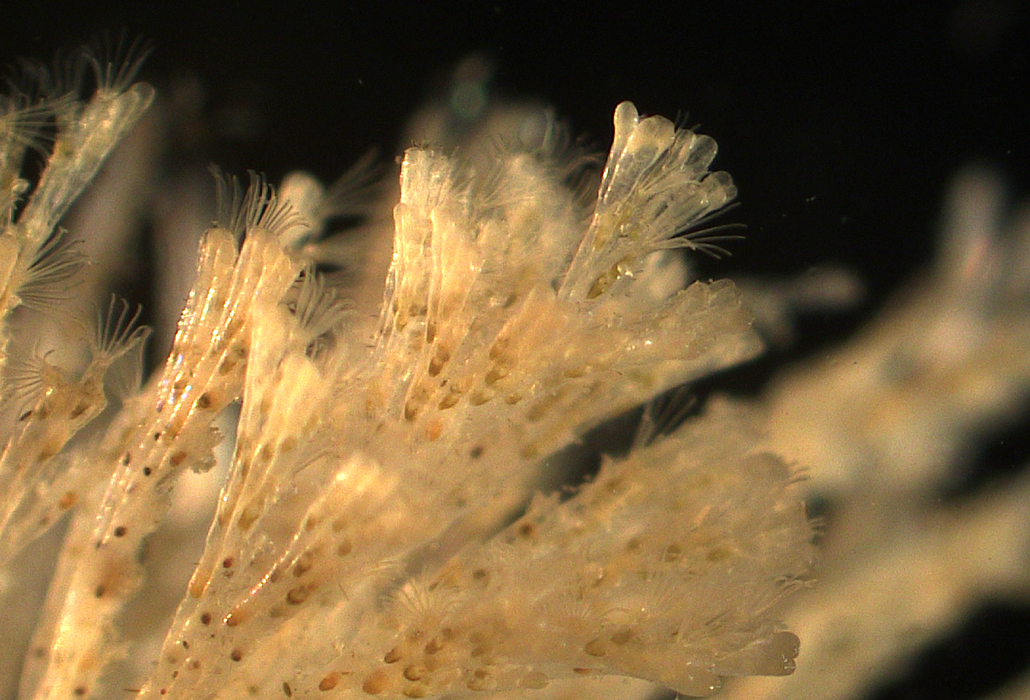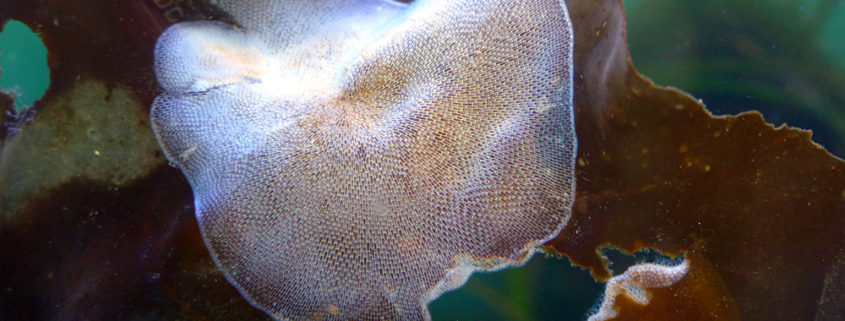Spiral Bryozoan Authors: Eden Murray and Claire Troost Scientific Name: Bugula californica Other Common Names: Stiff Stalk Bryozoan, California Moss Animal, Pacific Branching Bryozo Bugula californica can grow up to 7.5 cm tall and ranges from BC to Hawaii and the Galapagos Islands. It lives in subtidal zones as deep as 400m. It is commonly attached to hard surfaces, including docks and rocks. Each colony of the bryozoan is shaped similar to an evergreen tree, and is coloured light brown. It reproduces sexually, and after fertilization will form a planktonic larvae that settles in the subtidal zone. It grows through budding or cloning, to grow in a spiral pattern off the main axis. It is a main food source of the Clown Nudibranch (Triopha catalinae), and other nudibranchs including the Frosted Nudibranch (Dirona albolineata) and the White and Orange-tipped Nudibranch (Janolus fuscus). The bottom of the stalks are mostly darker, dead zooids (an individual of the bryozoan colony). A specialized zooid called Avicularium that looks similar to a bird-head keeps other organisms from resting on and growing on the bryozoan. They will also catch small crustaceans and bring it to the mouth of the zooids to feed it.
Kelp Encrusting Bryozoan Author: Madeleine Dorion Common Name: Kelp-encrusting Bryozoan, Kelp Lace Bryozoan, White Encrusting Bryozoan Scientific Name: Membranipora serrilamella Membranipora serrilamella get their more common name, Kelp-Encrusting Bryozoa, for fairly The small radial growths often merge with others patches of zooids to create colonies, with new Kelp-encrusting bryozoa can grow in waters up to as deep as 180 meters. It is not only found
obvious reasons. They grow on/encrust kelp with a white or silver crust that grows in circular
patches. Each of these circular patches are constructed by lots of tiny rectangular boxes, called
zooids.
growth continuing around the edges. Sometimes colonies do not get along, in which case, they
will compete for space.
growing on kelp but often on other solid surfaces such as rocks. It’s annual burst of growth occurs during summer months and during this time it can grow several millimeters in diameter per day. By the end of the summer some kelps are completely engulfed by a white crust.
Interesting resources for research and photographer credit
Latest Projects
VicHigh Marine
Victoria High School
1260 Grant St.
Victoria. BC, Canada
V8T 1C2
Phone: 250-388-5456
Email: dsyoung@sd61.bc.ca




